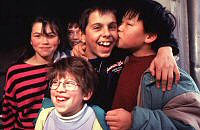| |
|
| Children with special needs Despite governments signing up to many a convention and seemingly supporting international guidelines on children with special needs, prejudices and exclusion still form part of everyday life for many children with special needs around the world. |
 The principle of ‘inclusive education’ put forward at the UNESCO-convened Salamanca conference in 1994 has been a major step forward, but a lot remains to be done.
The principle of ‘inclusive education’ put forward at the UNESCO-convened Salamanca conference in 1994 has been a major step forward, but a lot remains to be done.
|
|
UNESCO SHS
Have feedback? Email the SHS Webmaster |
||